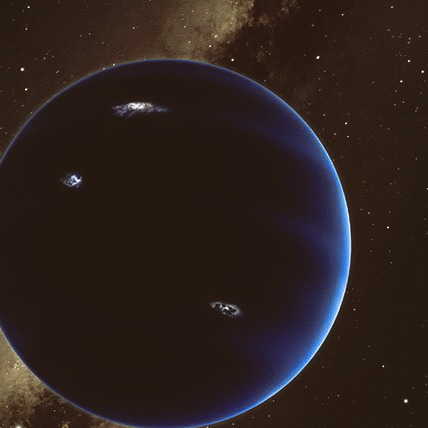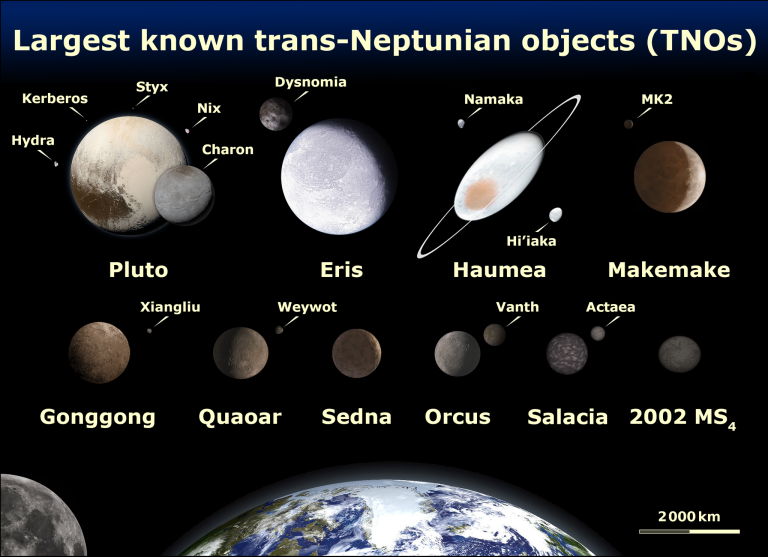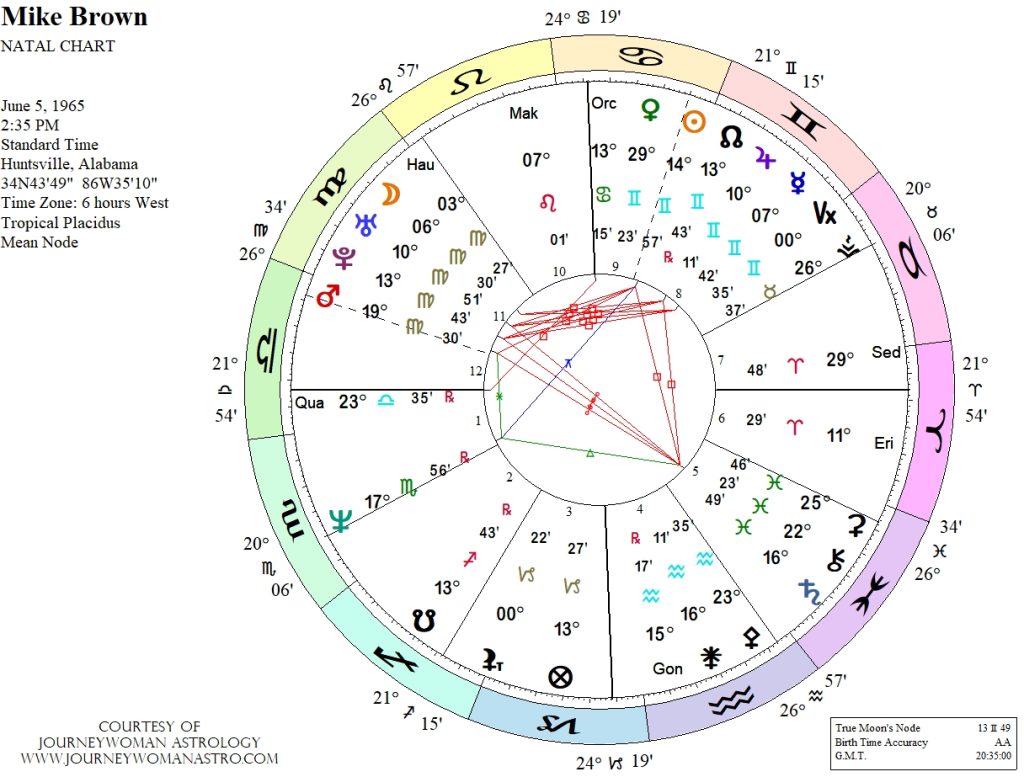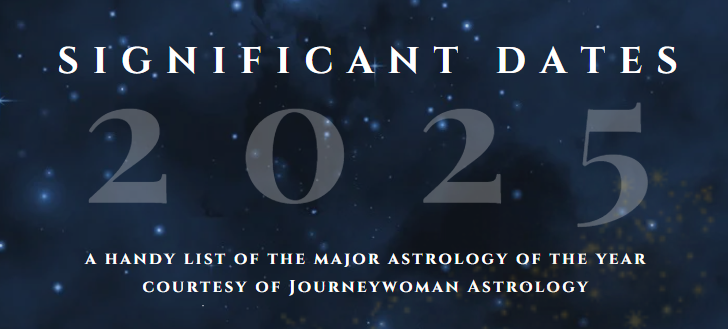
Are there more planets in the solar system? Mike Brown, the CalTech astronomer credited with the discovery of many of the newest so-called dwarf planets—including Eris, which officially lost Pluto its planet designation—thinks so.
Brown and a co-researcher posit the existence of a nearly Neptune-sized Planet Nine, pictured above, far past Pluto’s orbit.
Astrologers are only beginning to learn about the newest dwarf planets, but those Brown has discovered—Eris, Sedna, Makemake, Gonggong, Quaoar, Haumea, and Orcus, of those named thus far—have rich conceptual, cultural, and historical connections to draw upon in starting to examine their significations. It’s a comfort to astrologers that the discoverer of so many new cosmic bodies has a sense of poetry, since historically it’s the prerogative of each discoverer to bestow a name.
And Brown is unusually friendly to astrology. In 2008, he wrote, in a blog post titled “I 💙 Astrologers”:
Scientific astronomy, for all of its awe-inspiring, mind-expanding, and just simply amazing discoveries, leaves people and their consciousness out of the picture. Astronomy involves people looking up at the heavens, but the heavens are never looking back. Astrology, in contrast, never removed that connection between the sky and the people.
Brown believes there’s no causal connection between the planets and human behavior, perhaps not realizing most astrologers don’t posit that either—correlation is not causation, after all.
Yet, he noted, “I’m a Gemini, perhaps explaining my ability to accept the dual nature of astronomy/astrology.” No surprise that the man who wrote How I Killed Pluto and Why It Had It Coming has a sense of humor.
Of astrology, Brown continued:
Good astrology can be like good literature. Good literature builds a world that is not the real world but teaches us more about ourselves than we would ever learn by simply staring in the mirror. …
… I can’t help but love it. Astrology is not just figurative literature about humanity. Astrology cares about the sky. The astrologers who occasionally correspond with me love to hear about new solar system discoveries, figure out orbital relationships and patterns, and speculate about what else might be out there and how everything fits together. I do all of these things, too. I then take these thoughts and move on to think literally [about] their scientific implications. The astrologers take these thoughts and move on to think figuratively about what these mean for humans. But we, astronomers and astrologers, start in the same spot, with an intense interest in the sky.
I appreciate Brown connecting astrology and literature. “Astrology is the poetry of astronomy,” Steven Forrest wrote in The Inner Sky, and I’ve often thought of reading a chart as similar to reading poetry or fiction: in both, the interpretation of profound, historically and psychologically resonant symbols leads to greater insight and understanding of ourselves and the human condition. And, of course, the stories we tell ourselves, whether collectively or individually, matter far more than is often conventionally recognized. In reading a chart, we can discover new stories, excavate old ones, and create new paths forward. We are changed, just as we are by encounters with profound art.

So what’s Brown’s chart like? And what do the dwarf planets he’s discovered have to say? He’s certainly had an impact on astrology, which traditionally works with the known cosmic bodies within our solar system—look at how busy the chart is below with Eris, Sedna, Makemake, Gonggong, Quaoar, Haumea, and Orcus included.

In his chart, a Sun-North-Node-Mercury-Jupiter conjunction in Gemini in the 8th house suggests an ambitious, penetrating, highly communicative and intelligent mind. This stellium in the 8th, with that house’s Plutonian association, suggests a fascination with deep research, the formerly unknown or even taboo, as well as transformation—and he and his colleagues are clearly transforming our understanding of the furthest reaches of the solar system. It’s also true, as he hinted—all that Gemini points to an open, curious, questioning mind, one capable of recognizing some of the value of astrology while simultaneously operating at the outer reaches of scientific achievement.
Meanwhile, that stellium squares another powerhouse grouping: Mars, Pluto, Uranus, the Moon, and Haumea in Virgo in the 11th house. Virgo’s capacity for research and analysis, its prodigious ability to patiently sift through and find the gems within vast amounts of data, serves him well in his work combing the mind-boggling amount of information the deep-space Hubble and now Webb telescopes are producing.
A Uranus-Pluto conjunction is also highly resonant. I often observe Uranus prominent in the charts of scientists and, particularly, those who are attracted to the study of the cosmos, whether in the form of astrology or astronomy. The suggestion of this conjunction is deep transformation around how we understand those topics—the mark, in other words, of a highly inventive, if not genius, scientific mind. Mars adds energy to the conjunction, and the Moon, emotional resonance: in fact, it’s no wonder Brown has an empathetic (Moon) stance toward astrology (Uranus).
And what of the dwarf planets? By International Astronomical Union conventions, they are named after Greek, Roman, and—for the newest—Polynesian deities. Historically, it has taken astrologers decades, if not centuries or millennia, to fully grapple with the layers of archetypal meaning suggested by a cosmic body. Since the dwarf planets are so new, this project has only just begun. In There Are More Plutos, Sue Kientz presents the most comprehensive look at the dwarf planets I’ve come across (Henry Seltzer’s examination of Eris and Alan Clay’s treatment of Sedna also offer wonderful insights).
Two of the most prominent in Brown’s chart: Quaoar and Haumea. Quaoar, which lands on Brown’s Ascendant, Kientz suggests, can indicate a scientific mind that turns work into play. Haumea, the Hawaiian creation goddess, she connects to Pluto and suggests it can signify great transformation. Haumea in the mix of Brown’s Uranus-Pluto conjunction certainly points to his profound transformation of our understanding of the solar system. Quaoar, too, highlights his inventiveness; Kientz cites Stephen Hawking, Thomas Edison, and Benjamin Franklin as other scientific minds who had Quaoar prominent.
It’s also illuminating to look at the discovery chart of a planet in relation to a natal chart—for each of us, in terms of our relationship to that planet, but especially so for the actual discoverer themself. Quaoar was discovered on June 4, 2002, a day before Brown’s birthday—meaning the Sun in the discovery chart is conjunct Brown’s own Sun. Quaoar was Brown’s first major discovery, and this placement further cements their connection—both inventive, paradigm-shifting, and, for Brown, pointing in the direction of what he would become identified with (the Sun) throughout his groundbreaking career.
Eris was discovered on January 5, 2005, as transiting Mars opposed Brown’s Mercury nearly exactly (2-minute orb), suggesting the controversy that would soon ensue regarding Pluto’s demotion. Saturn was on his Midheaven, reflecting Brown’s ascension to leadership and authority in his field, while Neptune trined his Sun-North-Node conjunction—Eris also brought him fame and renown, which Neptune rules.
Will we soon have more dwarf planets or even planets to add to the chart? I look forward to finding out—as well as to learning more about these newest additions to the astrological pantheon.
